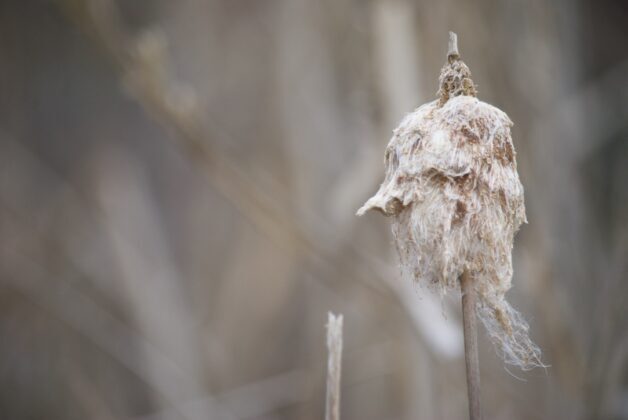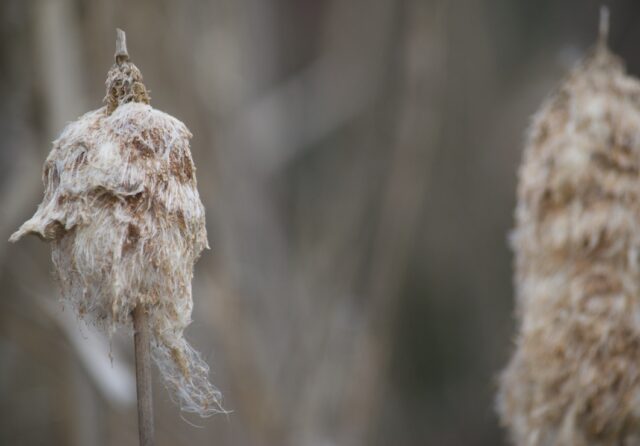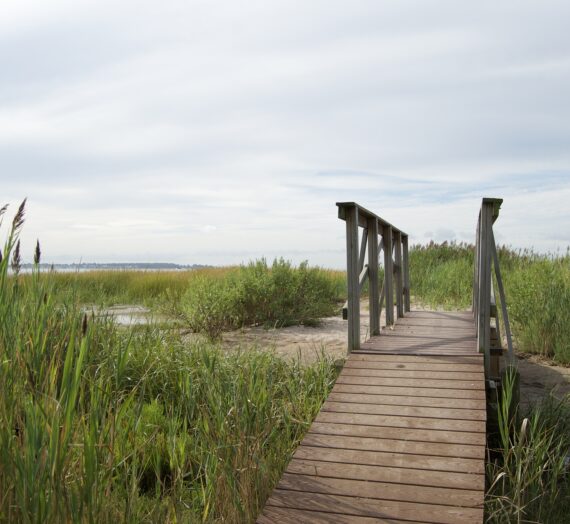“The early stages of transformation — where we find ourselves today — feel unsteady. They feel like the in-between mind of a teenager, neither child nor adult. For me right now, that unsteadiness feels like the sting of tears welling up as I sip lukewarm decaf coffee and read news of yet another major scientific report about the climate crisis. That unsteadiness means there is potential for many possible outcomes — but no guarantees. It will all depend on what we do and how we leverage our democratic systems to shape our collective future.”
-Kate Knuth, “Becoming a Climate Citizen,” from “All We Can Save”
Cattails live in semi-aquatic spaces. Liminal spaces. Both/and.
They are adaptive, not recognizing borderlines.
Besides merely existing on their own terms, parts of the plants are edible and have other uses.
They’re abundant because they can handle ambiguity. As new muddy areas emerge, cattails don’t waste their time deciding whether or not this is a place they would like to be. They get right in there.
Yet, they also manage their own population over time. There’s organization even where you would not expect.
A few years back there was a demonizing of cattails because of the methane produced from aquatic plant debris. (I’m simplifying this) What was not mentioned in many of these stories was anything much else about the plant, or an underlining of an important detail: cattails quickly move into areas where bare mud is revealed, and that happens when the forests usually found around lakes are cleared. I’ll say it again, another way: if we hadn’t been so quick to take down all the damn trees, there wouldn’t be so much opportunity for cattails to move on in.
The photos in this post were taken by the pond in Pope Park. Barely a pond, and definitely not a lake. The cattails are thickest where the trees aren’t. In a park that’s been sheared to allow for sportsball fields, most biodiversity you’ll find is immediately in and around the pond. The whole trend of wide open park spaces for a particular kind of vista or use has its issues.
A few months after the methane panic, other findings were published. Cattails grown on rewetted peatlands have positive impacts on both water quality and carbon sequestration.
What I know is that here in Pope Park, in this terribly abused corner of the world, I can find Red-winged Blackbirds posted on the plants, calling to one another. In a nearby tree above, I can find a heron resting. And near that tree, on a small piece of grass that hadn’t been claimed for sportsball, someone has made their makeshift home where there is a sliver of privacy offered by those cattails.
Climate Possibilities is a series about climate mitigation, along with resilience, resistance, and restoration. It’s about human habitat preservation. It’s about loving nature and planet Earth, and demanding the kind of change that gives future generations the opportunity for vibrant lives. Doomers will be eaten alive, figuratively. All photographs are taken in Hartford, Connecticut unless stated otherwise.



Liminal Spaces – Real Hartford | word pond
[…] Source: Liminal Spaces – Real Hartford […]